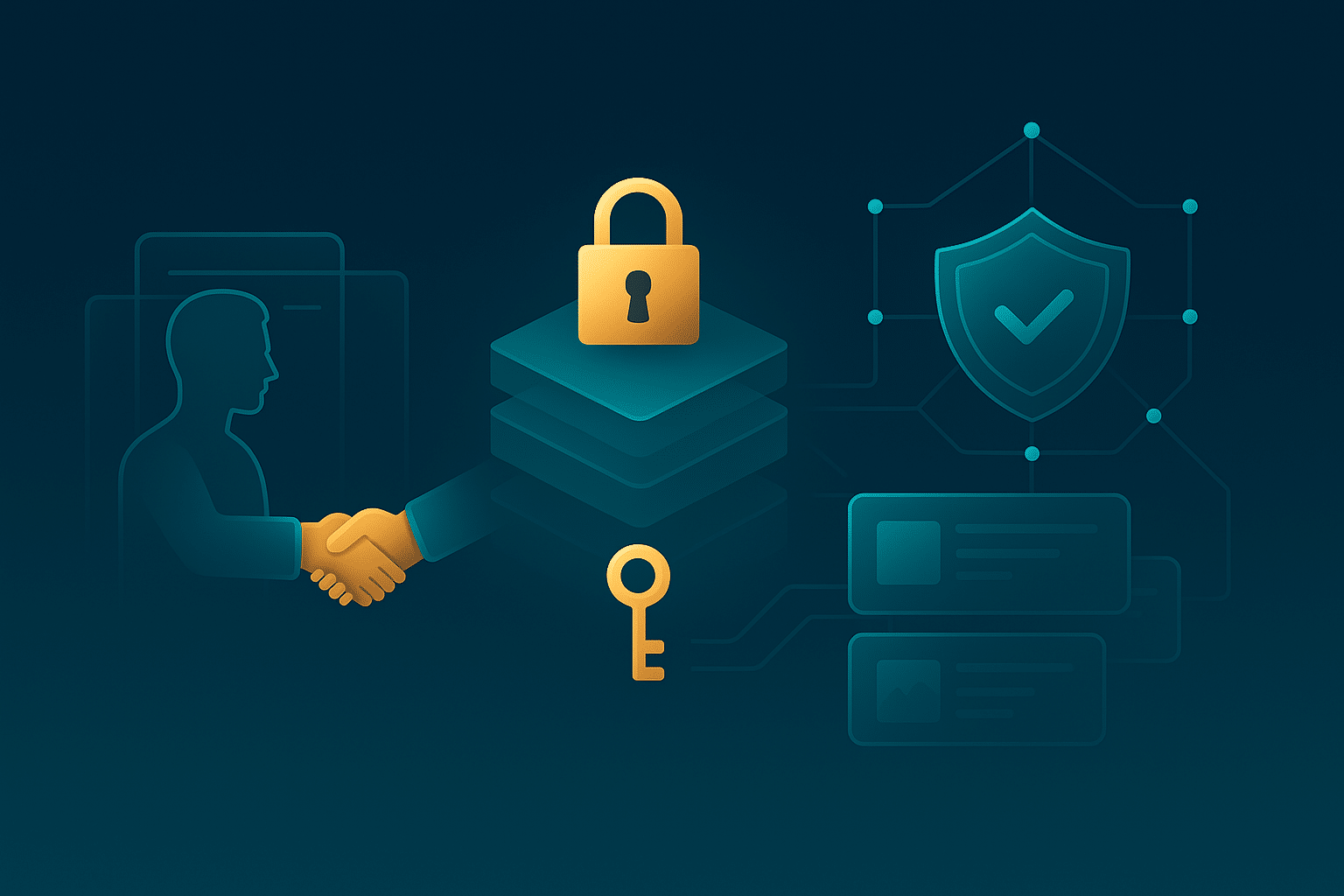Knowledge-based trust means trusting someone or something based on facts, repeated actions, or known patterns, not just authority or fear. It grows when there is real proof or steady behaviour to go on. People and systems use this kind of trust in daily life, social relationships, and technology.
In social science, it shows up when people feel safe relying on others after learning from past experience. In computer science, it appears in tools that check facts using data or compare actions with verified sources. Both fields agree on one thing: trust must come from what is known, not just what is said.
This idea is used in online search, data systems, and even cybersecurity, where trust scores are created using past signals, logic, and real-world checks. Whether between friends or machines, knowledge-based trust means you do not guess trust—you build it from known facts.
In social science, knowledge-based trust is seen as a middle level of trust, sitting between deterrence-based trust and identification-based trust. It forms when two people or groups have interacted enough times to predict how the other will behave. This trust is based on facts, habits, and past actions—not fear or emotions.
Comparison with other trust types
According to trust theory:
- Deterrence-based trust (or calculus-based trust) is built on fear of punishment if someone breaks trust. It is fragile and does not last long.
- Knowledge-based trust grows when people learn about each other over time. They observe patterns, track behavior, and gain confidence in what to expect.
- Identification-based trust is deeper. It depends on shared values or emotional closeness. Each person feels the other will act in their interest.
How knowledge builds trust
As two people work together, they collect facts about each other’s style, strengths, and habits. For example:
- A co-worker always finishes tasks before deadlines
- A manager always gives honest
- A team member is known to be late but always completes quality work
This creates predictability, which reduces risk and increases trust.
Even if the behavior is not always positive, being able to predict actions helps people trust. Saying, “I trust her to be late but to deliver good work,” is an example of knowledge-based trust.
Where it appears most
- Workplaces: It is the most common trust in professional settings, where people rely on past actions rather than emotions.
- Mentorships: Long-term mentor-trainee bonds grow as both learn each other’s patterns.
- Organisations: Teams build trust by sharing regular, honest communication over time.
Why regular contact matters
To keep knowledge-based trust, people need to talk often. Regular interaction updates what each person knows. This keeps the trust steady and helps avoid surprises.
How knowledge-based trust is used in computer science and technology

In computer science, knowledge-based trust refers to checking digital trustworthiness using factual data instead of reputation or popularity. Systems that use this method look at what is known, not just what others say. It is used in search ranking, network security, and smart devices.
Search engines and factual trust
In 2015, Google researchers proposed a new metric called the Knowledge-Based Trust (KBT) score. This score was designed to rank websites by factual accuracy rather than just link popularity. The method worked by:
- Extracting knowledge triples (like Barack Obama – nationality – American) from web pages
- Comparing those claims with trusted sources like Google’s Knowledge Graph and the Knowledge Vault
- Giving higher scores to pages with more facts matching the known truth
- Lowering scores for pages with many errors or false claims
This approach used an endogenous signal (accuracy inside the content) instead of an exogenous signal (like backlinks used in PageRank). It aimed to highlight reliable content, even if the site was not widely linked.
The research built a probabilistic model to separate wrong facts from extraction mistakes. The model was tested on over 119 million web pages and 2.8 billion facts. It showed that pages with more verified information often scored higher on trust—even if they were not popular.
Challenges and research status
Although the idea was promising, the KBT score remained a research concept. Google did not confirm adding it to live search. The system also faced key issues:
- Truth can change with time or context
- Knowledge bases might have errors or miss certain facts
- Automated tools can misread pages, causing wrong judgments
Even so, the study marked a clear move toward fact-driven trust models in online search.
Use in networks and smart devices
Outside search, knowledge-based trust is used in systems like: Peer-to-peer networks, Distributed systems , Internet of Things (IoT)
In these fields, trust is not just about others’ opinions. Devices assess each other using direct knowledge such as:- Verified credentials (e.g., device type or security keys) , Observed behaviors (e.g., message delivery patterns, past responses)
This method is part of multi-layer trust models, which include:
- Recommendation trust – based on ratings or reviews
- Reputation trust – based on history within the network
- Knowledge trust – based on known traits or direct past experience
In an IoT social network, for example, one device may trust another if it sees familiar behavior or matches known profiles. If a device starts acting strangely, its trust score may drop.
These models help machines decide whom to trust in tasks like: Sharing data , Routing messages , Assigning roles
Just like people learn who to trust by watching how others behave, knowledge-based trust in technology lets systems use facts and patterns to decide. It reflects the same idea: trust grows from experience, not just reputation.
Challenges of using knowledge-based trust
Challenges and considerations in knowledge-based trust include limits in both human and machine settings. Trust built on facts depends on how complete, current, or unbiased that knowledge is—gaps, errors, or changing truths can affect how trust is formed and maintained.
Human limits in building trust through knowledge
In real-life relationships, knowledge-based trust takes time. People need consistent interaction to form accurate judgments. But this process has limits:
- People may build trust based on incomplete or misread signals
- False assumptions can create trust that later breaks
- Knowing someone does not always mean predicting correctly
Even frequent contact may not be enough if the shared knowledge is shallow or one-sided.
Data and truth challenges in digital systems
In technology, the strength of knowledge-based trust depends on the quality of the knowledge base. Problems arise when:
- The reference data is outdated, biased, or missing key facts
- Truth is not binary—it can change, evolve, or depend on context
- Valid but unfamiliar claims get marked as untrustworthy simply because they do not match known entries
For example, Google’s proposed KBT score used the Knowledge Graph to check online content. But if a page shared new science or niche research, it could rank low—not because it was wrong, but because the system had no matching data.
This raises the risk of:
- Penalizing novel ideas or minority viewpoints
- Creating a feedback loop where only mainstream knowledge is reinforced
Blending knowledge with other trust signals
Most trust systems today use knowledge-based trust alongside other models. Designers combine different sources to improve decisions:
- Google used KBT as an add-on, not a replacement for PageRank
- In IoT networks, trust models include:- Reputation trust , Recommendation trust , Knowledge trust
This multi-layer approach adds balance. Machines can trust based on facts, patterns, and collective input—mirroring how humans weigh different cues.
As both social and technical systems evolve, knowledge-based trust will likely grow in importance. It turns the basic human rule—trust what you know—into a usable principle for machines and data-driven decisions.
References
- https://courses.lumenlearning.com/wm-organizationalbehavior/chapter/trust-and-leadership/
- https://www.acigjournal.com/Trust-Framework-on-Exploitation-of-Humans-as-the-Weakest-Link-in-Cybersecurity,184310,0,2.html
- http://www.internationaljournalcorner.com/index.php/ijird_ojs/article/viewFile/134206/98877
- https://www.researchgate.net/profile/Roy_Lewicki/publication/234021697_Developing_and_Maintaining_Trust_in_Working_Relations/links/5624542708ae93a5c92cb8e1.pdf
- https://www.washingtonpost.com/news/the-intersect/wp/2015/03/02/google-has-developed-a-technology-to-tell-whether-facts-on-the-internet-are-true/
- https://fli.institute/2015/03/01/google-researchers-looking-to-rate-websites-based-more-on-trustworthiness/
- https://www.kopp-online-marketing.com/what-is-the-google-knowledge-vault
- https://www.vldb.org/pvldb/vol8/p938-dong.pdf
- https://dl.ifip.org/db/conf/icin/icin2016/1570230093.pdf


